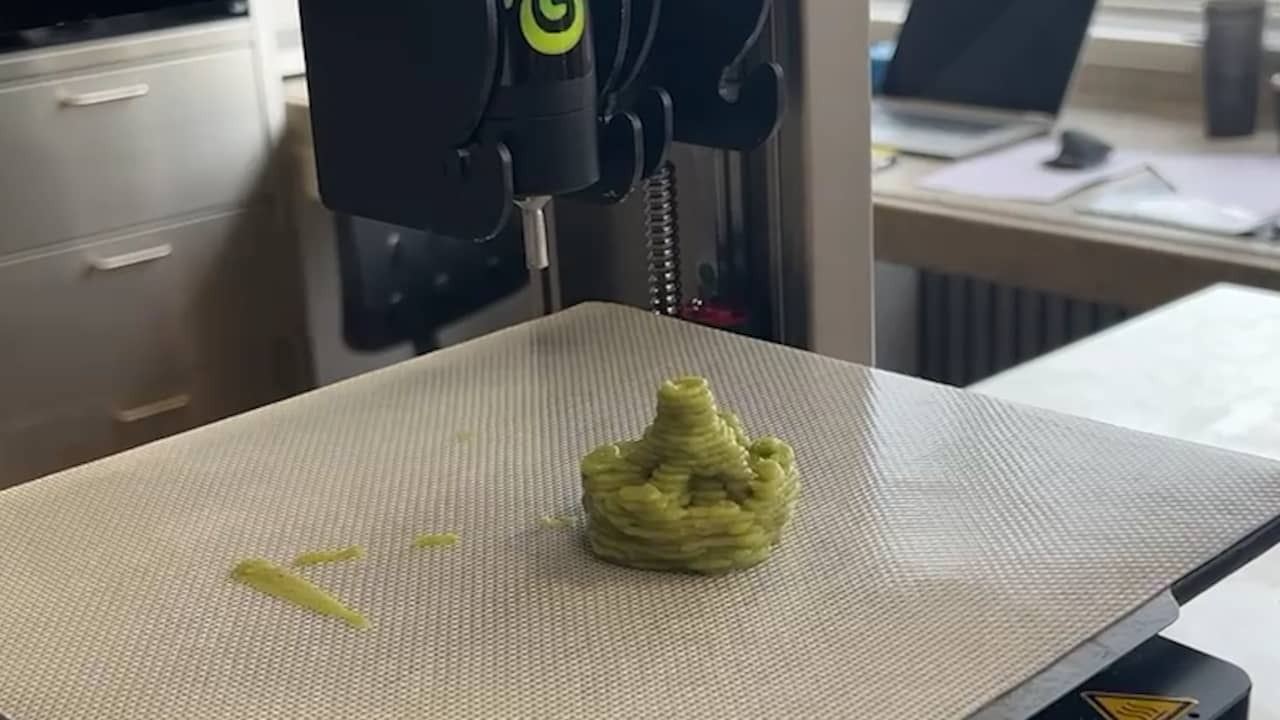
Getting a bowl of pureed food in front of you at every meal. For people with chewing or swallowing problems, it’s a daily occurrence. 3D-printed food could be a solution to this problem.
“What does it do to someone’s eating pleasure if they are only served mashed food?” Kristy Donze wonders aloud in conversation with NU.nl. Donze is project leader at the Walcheren healthcare institution Amarijn. There, they have been running a pilot project for the use of 3D-printed food at various locations in Zeeland since April.
“We were looking for a way to easily offer food to people with chewing and swallowing problems. It is important that the food also looks tasty for them,” says Donze. They do this at Amarijn for a small group of people. Donze speaks of about five patients per location who suffer from the swallowing disorder dysphagia. “But we also want to see what changes this pilot brings for this group.”
Amarijn doesn’t ‘print’ the food – think broccoli, cauliflower or beetroot – themselves. That is done by the food production company Gastronology. It is important that this is done carefully. “There really can’t be any pieces of food in the 3D food, otherwise these people could choke,” says Gastronology founder Peter Nieuwkerk.
Chef Eugène Swalen explains how, for example, normal broccoli is converted into a puree that the 3D printer can use. “The food is pressed through a filter via a pipe. This leaves you with puree with pieces of a maximum of 1 millimeter in size,” says Swalen. The food must meet IDDSI score 4. That is a scale that subdivides food and drink based on thickness and texture, where 0 means liquid and 7 means solid food.
The printer in the photo and in the video below works well, but according to Swalen it is mainly a show model. The larger-scale 3D printing of the food takes place in a factory. There, a total of eight different vegetables are converted into 3D food. “Food is made there for about five thousand people.”
The vegetables are frozen, packaged and sent to healthcare institutions such as Amarijn after printing. NU.nl was not allowed to speak to clients who are served the food. However, Ton Snijders as a chef at Amarijn was able to talk about the reactions he gets to the 3D-printed food.
Snijders distinguishes between clients who are able to give a verbal reaction and those who are not. “Some of the people who receive printed food are incapacitated or have certain forms of dementia or Parkinson’s,” says the chef. Nevertheless, Snijders and his colleagues can say that many clients are happy with the food. “You can often just read facial expressions. Or they eat their plate completely empty.”
During the Amarijn pilot, clients do not only receive 3D-printed food. “There are eight types of vegetables that we receive, so for now we alternate with homemade food,” says project leader Donze. “If there are also meat variants or multiple vegetables, then we may be able to serve this food more often.”
Gastronology reports that 3D-printed chicken fillet should also be ready in October, as well as three new vegetables.
If Amarijn itself doesn’t have that many dysphagia patients, doesn’t such a pilot take extra time and effort in proportion? “That is part of the pilot. We are trying to find out whether 3D-printed food takes extra time,” says Donze. “It is a ready-made and frozen product that we only have to put in the oven.”
The number of dysphagia patients at Amarijn does not seem representative of the rest of the Netherlands. It is estimated that there are approximately 150,000 to 600,000 Dutch people who have a form of the swallowing disorder. Swalen: “So we can help many more people than the five thousand that our factory can serve.”